Welcome to the A to Z of Bonsai.
We are compiling a worldwide A to Z of Bonsai database. The A to Z is written collaboratively by the people who use it and we would like to encourage anyone reading this page to contribute to what has become the worlds greatest encyclopedia of bonsai terms. Entries when they are made will be added to an editable list which will be checked prior to publication. Photos and images of the bonsai term can be added and links made to relevant web pages.
|
 - 24 entries - 24 entries |
|
 |
|
|
  |
(No Photo Yet)
(Send Image) |
NANAKAN - Denotes a "7 trunks on the saME tree" style.
|
|
 |
|
|
  |
(No Photo Yet)
(Send Image) |
NANOHAN YOSE - GROUP PLANTING with seven trees
|
|
 |
|
|
   |
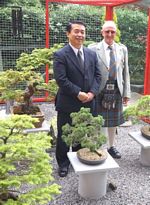
|
BONSAI>BONSAI>BONSAICOLLECTIONOFSCOTLAND>NATIONAL BONSAI COLLECTION OF SCOTLAND - The National Collection of Bonsai in Scotland is based around the "Graham trees" as they are known. Bill Graham, of MayBOLE in Ayrshire was a master butcher, and when he retired he concentrated on creating and collecting bonsai.Over nearly thirty years, he developed his knowledge and his collection of 300 trees,
When Bill died in 1983, his widow donated the trees to the Local Authority Parks DepartMEnt of Kyle and Carrick so that some them at least, could continue to be displayed at their Annual AYR FLOWER SHOW. Eventually, Patrick Gibb, then principal organiser of the Show, passed the "Graham Trees" to the Scottish Bonsai Association in November 1984. A group of members set up the first ever National Collection of Bonsai in Britain. Mrs Graham then legally gifted the trees to the SCOTTISH BONSAI ASSOCIATION (SBA).
The collection is located at BINNY PLANTS, Binny Estate, Ecclesmachan, West Lothian, Scotland, EH52 6NL.
|
| Thanks to - SBA Bonsai Image Gallery for use of the image |
|
 |
|
|
   |
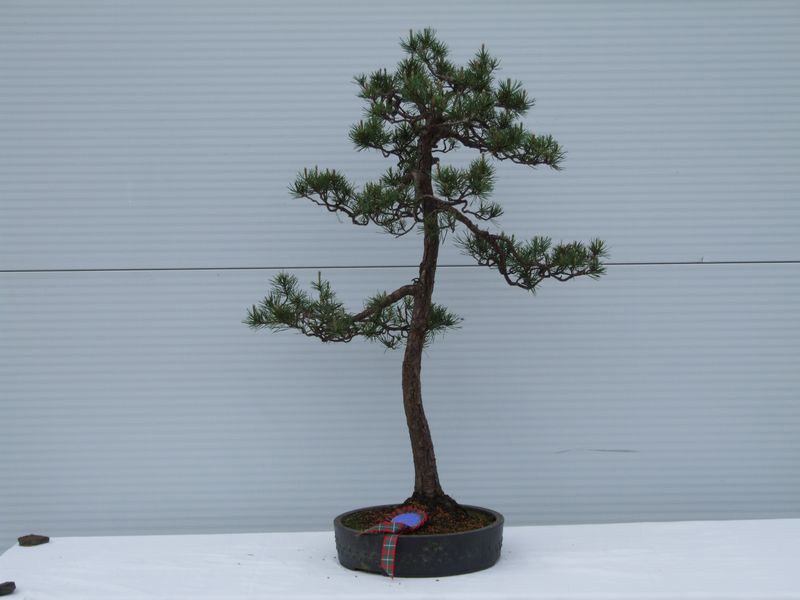
|
NATIONAL TREES - A list of soME national trees -
England - Royal Oak (QUERCUS Robur)
Ireland - SESSILE Oak (Quercus Petraea)
Scotland - SCOTS PINE (PINUS SYLVESTRIS)
United States - Oak (Quercus)
Wales - Sessile Oak (Quercus Petraea)
|
| Thanks to - SBA Bonsai Image Gallery for use of the image |
|
 |
|
|
  |
(No Photo Yet)
(Send Image) |
NE TSUNAGARI - Japanese term for corrected root style of BONSAI>BONSAI>BONSAI.
|
|
 |
|
|
  |
(No Photo Yet)
(Send Image) |
NEAGARI - This style is more commonly found in PenJINg. The calligraphic and emotive quality of line offered by the exposed root contrasts sharply with the more solid mass-oriented styles popular in Japan. See also "Exposed root" style.
|
|
 |
|
|
  |
(No Photo Yet)
(Send Image) |
NEBUSE - Japanese term for PRUNING>ROOT PRUNING.
|
|
 |
|
|
  |
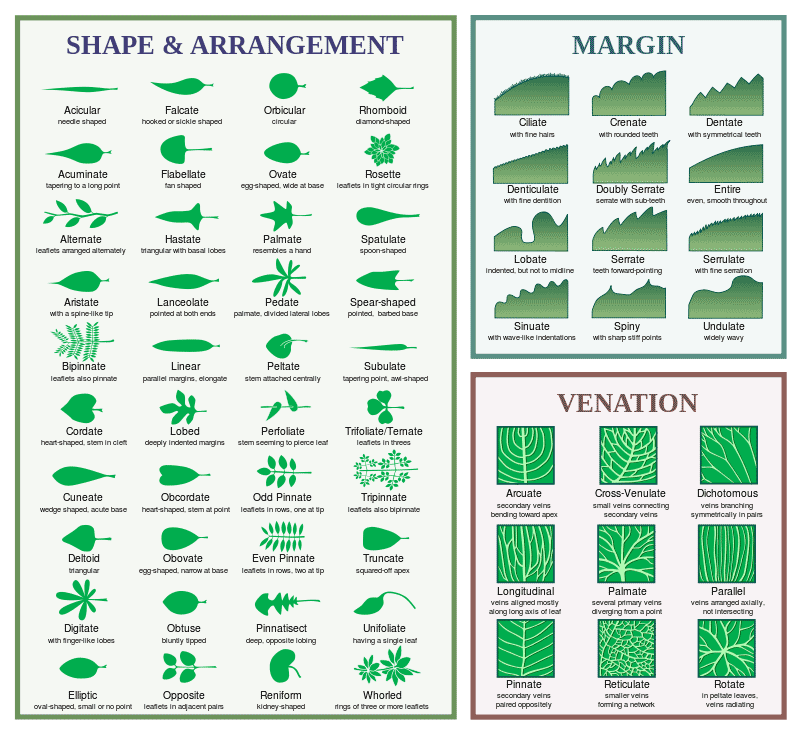
|
NEEDLE - A leaf type which is narrow and usually stiff e.g. pine needles.
|
|
 |
|
|
   |

|
NEEDLEJUNIPER(JUNIPERUSRIGIDA)>NEEDLE JUNIPER (JUNIPERUS RIGIDA) - Small EVERGREEN tree with arching branches and small, needle-like LEAVES which are flaccid when young but becoME sharp when mature.
STYLE : All styles except broom.
WARNING : It can take up to 12 months for tree death to manifest itself in foliage browning/DIE-BACK. Rare and difficult to diagnose fungi can affect needle JUNIPERS. Any areas of discoloured foliage that cannot be attributed to SPIDER MITEs need to be cut back to healthy wood and burned.
|
|
 |
|
|
  |
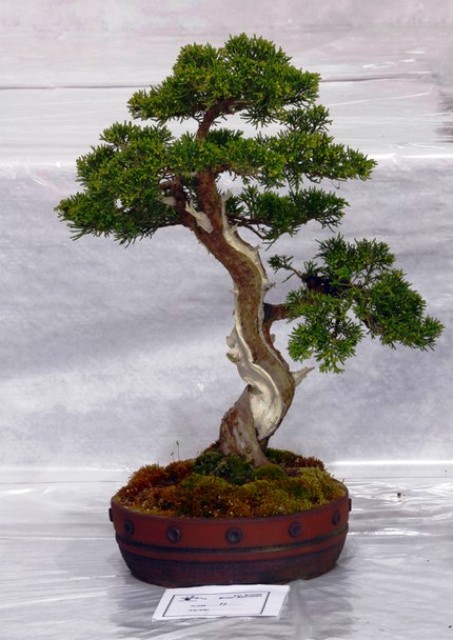
|
NEJIKAN - This "TWISTED Style" is defined by a trunk which grows in a twisted style (but not exagerated into full coils , which is the BANKAN style).
The existance of SHARI will exagerate the effect, which in extreME examples can be described as the "barber pole" effect. This is most often seen on juniper where the red BARK contrasts vividly with the pale shari.
|
| Thanks to - SBA Gallery for use of the image |
|
 |
|
|
   |
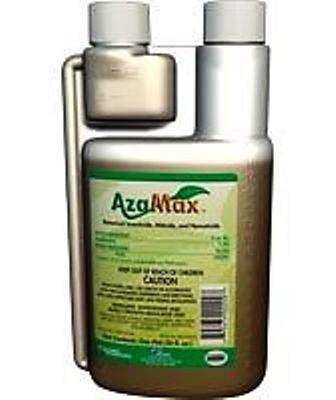
|
NEMATICIDES - These are chemicals designed to eradicate parasitic NEMATODES>NEMATODES.
|
| Thanks to - AzaMax for use of the image |
|
 |
|
|
   |
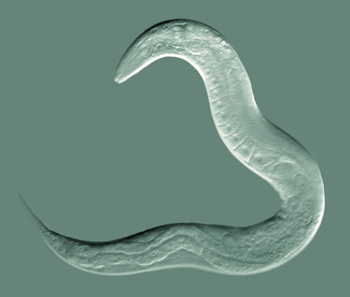
|
NEMATODES>NEMATODES - Naturally occurring microscopic worms, already present in the soil which attack and kill targeted garden pests.
The nematode that kills specific garden pests including slugs, VINE WEEVILs, chafer grubs, leatherjackets, CATERPILLARS, codling moth and various others has been identified and is specially bred to be easily applied with a WATERING can. They die back to original numbers when all pests have been consuMEd.
|
| Thanks to - Wikipedia for use of the image |
|
 |
|
|
   |

|
NEMATODES>NEMATODES - Wart-like swellings which appear on the ROOTS of certain SPECIES (mainly Rosaceae e.g. qunce/cotoneaster). Visible impact is flagging topgrowth.
Checks for nematodes should be carried out at re-potting. If identified, the affected area should be sliced off and a systemic FUNGICIDE sprayed directly onto the cut. Once re-potted fungicide should be applied every 2 weeks for the next 4-6 weeks.
|
|
 |
|
|
  |
(No Photo Yet)
(Send Image) |
NETSURANARI - Japanes term for root connected style where trees sprout from long surface ROOTSof of more than one rootstock. this occurs naturally in willow, quince and vine maple.
|
|
 |
|
|
  |
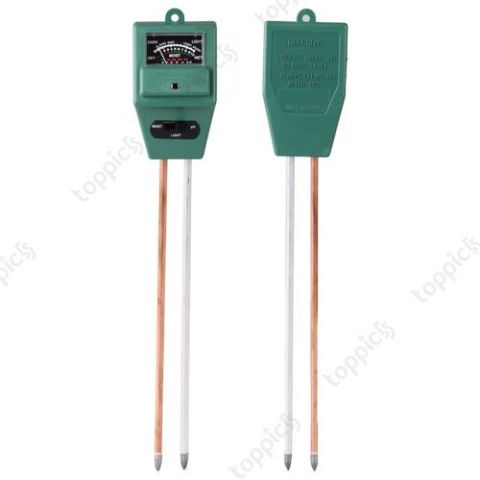
|
NEUTRAL SOIL - Soil which is neither predominantly ACID or ALKALINE having a pH of 6.5-7.3
|
|
 |
|
|
  |
(No Photo Yet)
(Send Image) |
NEW WOOD - Growth which has been produced during the current season.
|
|
 |
|
|
   |
(No Photo Yet)
(Send Image) |
BONSAI>BONSAI>BONSAICENTRE>NEWSTEAD BONSAI CENTRE - HoME of John Hanby and location for his bonsai school. Open to the public and with online shop.
Contact - Newstead Bonsai Centre
Newstead Lane (B6428)
Havercroft
Wakefield
West Yorkshire
WF4 2HW
|
|
 |
|
|
  |
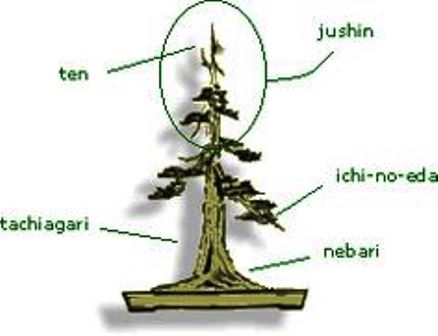
|
EDA>EDA>NI NO EDA - Japanese term for the second branch of a BONSAI>BONSAI>BONSAI tree.
|
|
 |
|
|
  |
(No Photo Yet)
(Send Image) |
NODE - A stem joint , or the point at which a leaf or LEAVES eMErge. Nodes also naturally carry BUD>BUDs and therefore are the points from which SHOOTS may grow. The spaces between the nodes are termed INTERNODEs
|
|
 |
|
|
   |
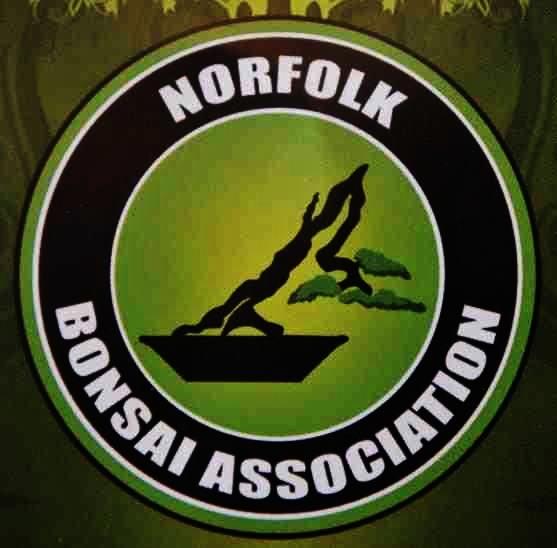
|
BONSAI>BONSAI>BONSAIASSOCIATION>NORFOLK BONSAI ASSOCIATION - Blog news on facebook site
|
|
 |
|
|
   |

|
BONSAI>BONSAI>BONSAI>NORTH DEVON BONSAI - A friendly group of enthusiasts who welcoME all from the absolute novice to the highly skilled. "It is simply the love of Bonsai that brings us together to learn and have fun. "
Meet on the second Monday of each month @ 7.30pm with a varied programme of advice and help.
Usual meeting place:- Methodist Church Hall
Rhododendron Avenue
Barnstaple
North Devon
Contact:- Roy 01398 341440 or Alan 01271 322916
|
|
 |
|
|
   |

|
BONSAI>BONSAI>BONSAI>NORTH OF ENGLAND BONSAI - Operates out of Baldersby near Thirsk in Yorkshire.
North of England Bonsai is the north's premier supplier of Bonsai trees, accessories and advice.
Richard Reah the proprietor, focuses on both the professional presentation and retail of bonsai from the smallest most quaint of trees to absolutely spectacular showpieces.
Contact - Telephone:07792 121913
|
|
 |
|
|
   |

|
BONSAI>BONSAI>BONSAISOCIETY>NORTHERN IRELAND BONSAI SOCIETY - The Northern Ireland Bonsai Society was founded in 1986 by a small group of people who realised the need for an organisation to promote and further it in this country.
The Society holds a MEeting on the Second Friday of every month at 8.00pm. (Except July& August).
They meet in the Cregagh Youth & Community Centre,
Mount Merrion Avenue,
Belfast.
Name: Ian Young
email: info@nibonsai.co.uk
Tel No: 77952 63569
Venue: Cregagh Library, 413 Cregagh Road , Belfast
Day: 2nd Friday
|
|
 |
|
|
   |

|
NOTHOFAGUS - Nothofagus (also generally referred to as SOUTHERN BEECH), is native to South AMErica (Chile & Argentina)and Australasia. In the past, they were classified as beech but they are now included as a separate GENUS covering 36-40 different SPECIES. Nothos (means false) and Fagus (to which it is related) is the beech genus. The genus includes both DECIDUOUS and EVERGREEN species. Common varieties for BONSAI>BONSAI>BONSAI are Procera (Southern Beech)and Obliqua (Roble Beech)but the most common is the Antarctica (Antarctic Beech) the LEAVES of which are small, dark green with wavy or toothed edges and the BARK is dark and slightly "craggy".
STYLE : small leaf size makes them best suited to small/medium size specimens in informal upright, slanting, twin trunk, CLUMP and group styles.
WARNING : Due to their southern origins many of the varieties do not like excessive winter cold. They are light demanding plants and so best placed in an open, sunny position.
|
| Thanks to - Joe Bailey, Ayr for use of the image |
|